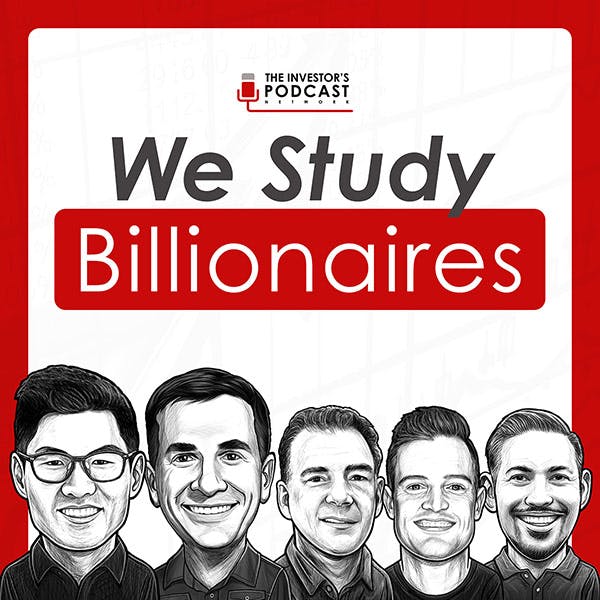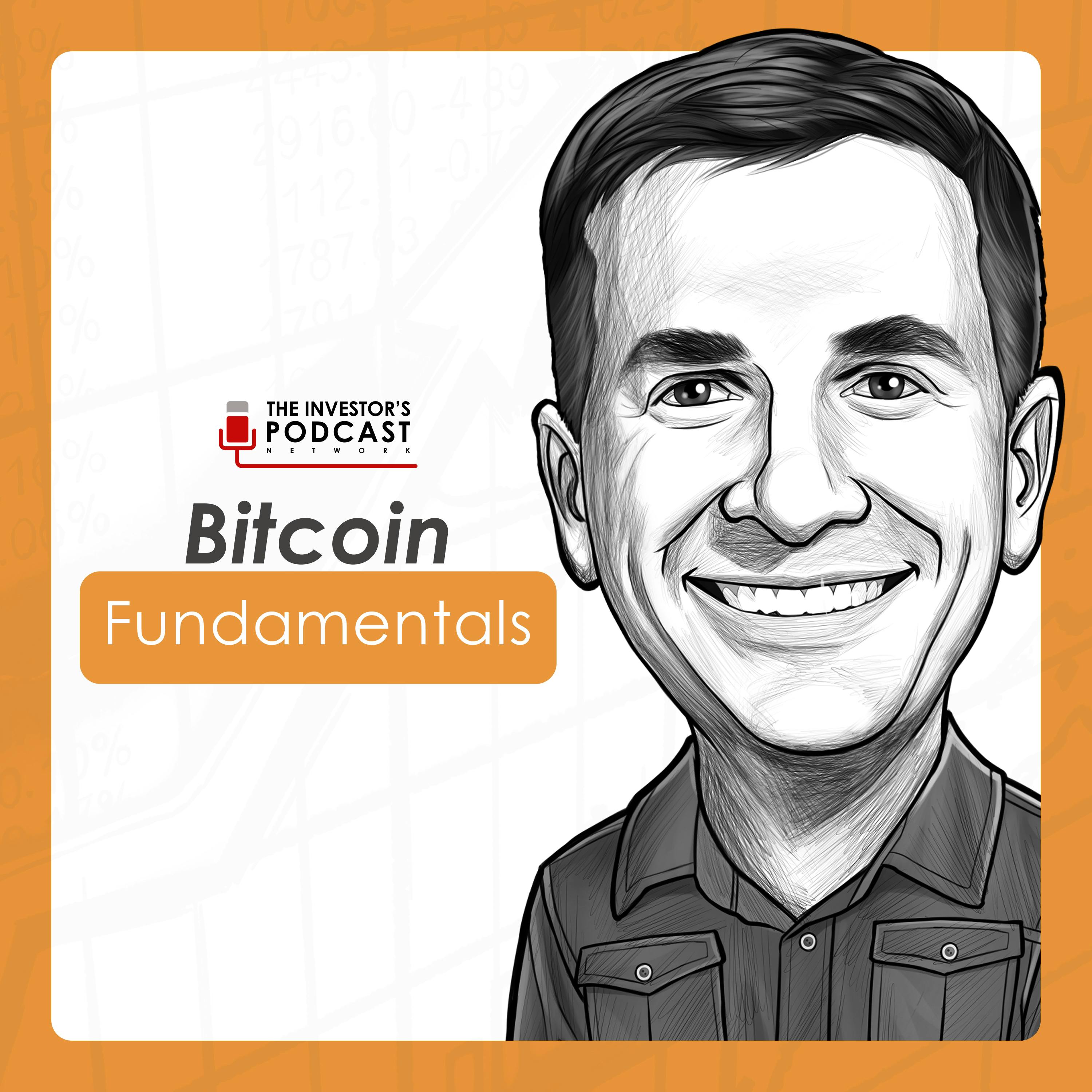
August 16, 2024 • 1hr 34min
TIP652: Best Quality Idea Q3 2024 w/ Clay Finck & Kyle Grieve
We Study Billionaires - The Investor’s Podcast Network

Key Takeaways
- Old Dominion Freight Line has been one of the best performing stocks over the past 20 years, outperforming well-known companies like Amazon, Costco and Microsoft
- The company was founded in 1934 during the Great Depression and has survived through many challenges over its long history, including union strikes and economic downturns
- Old Dominion operates in the less-than-truckload (LTL) shipping industry, which consolidates shipments from multiple customers into single truckloads
- The company has significant competitive advantages, including a network of strategically located service centers, superior technology and logistics capabilities, and a strong company culture
- Old Dominion has consistently gained market share over competitors, growing from 3% market share in 2002 to nearly 12% today
- The company leads the industry in key metrics like operating ratio (72% vs 80%+ for competitors) and return on invested capital (nearly 30%)
- Management has a long history with the company and significant insider ownership, helping align incentives with shareholders
- The company has a strong balance sheet with minimal debt, giving it flexibility to reinvest in the business and opportunistically repurchase shares
- At current valuations, the hosts estimate potential returns in the low to mid-teens range based on earnings growth, capital returns, and potential multiple contraction
Introduction
In this episode of We Study Billionaires, hosts Clay Finck and Kyle Grieve discuss Old Dominion Freight Line as their best quality stock idea for Q3 2024. Old Dominion is a less-than-truckload (LTL) trucking company that has been one of the best performing stocks over the past 20 years, outperforming well-known companies like Amazon, Costco and Microsoft.
The hosts provide an overview of the company's history, business model, competitive advantages, financial performance, management, and valuation. They also compare Old Dominion to other high-quality compounders like Copart and discuss why they believe it could continue to be a strong performer going forward.
Topics Discussed
Company History and Culture (2:14)
Old Dominion was founded in 1934 by Earl and Lillian Congdon during the Great Depression. The company started with just a single truck doing daily routes in Virginia. Some key points about the company's history and culture:
- The company has survived many challenges over its long history, including the unexpected death of founder Earl Congdon Sr. at age 43
- Old Dominion has a strong family culture, with multiple generations of the Congdon family involved in leadership roles
- The company puts a big focus on providing high-quality service, which has allowed them to charge premium prices in a commoditized industry
- Old Dominion has avoided unionization by providing a good work environment and taking care of employees
- The family ownership and long-term orientation has helped the company make difficult decisions to optimize for long-term success
"These family owned businesses, I think they just look to do what's right. And even if it might negatively impact to the bottom line in the near term, they're optimizing for the long term strength and health of the business." - Clay Finck
Business Model and Competitive Advantages (21:06)
Old Dominion operates in the less-than-truckload (LTL) shipping industry, which consolidates shipments from multiple customers into single truckloads. Some key aspects of their business model and competitive advantages:
- Network of service centers - Old Dominion has over 260 strategically located service centers across the U.S., giving them a cost advantage and network effect
- Superior technology and logistics - The company has invested heavily in technology to optimize routing and improve efficiency
- High-quality service - Old Dominion consistently wins industry awards for service quality, allowing them to charge premium prices
- Non-union workforce - By avoiding unionization, the company has more flexibility and lower costs than many competitors
- Strong balance sheet - Old Dominion owns most of its real estate and has minimal debt, providing financial flexibility
- Scale and density advantages - As the company has grown, it has achieved better route density and economies of scale
"Old Dominion, from what I can tell, just looks to be in a league of its own. You look at the return on invested capital, it's nearly 30%, well above all of the competitors." - Clay Finck
Industry Dynamics and Market Share Gains (21:06)
The LTL trucking industry has undergone significant changes over the past 20 years, with Old Dominion emerging as a clear winner:
- The industry has consolidated, with the top 10 players now controlling 75-80% of the market
- Old Dominion has grown from 3% market share in 2002 to nearly 12% today
- Many competitors have gone bankrupt or been acquired, allowing Old Dominion to gain share
- The company's superior service and efficiency have allowed it to consistently take business from competitors
- E-commerce growth has benefited the LTL industry and Old Dominion in particular
"Over time, I think 10% [earnings growth] is quite reasonable, and then you may see a bit of multiple contraction. But I wouldn't say today's price is egregious by any means." - Clay Finck
Management and Capital Allocation (41:53)
The hosts discuss Old Dominion's management team and capital allocation approach:
- The current CEO, Kevin Freeman, has been with the company since 1992 in various roles
- Management compensation is tied to operating ratio and pre-tax income metrics
- Insiders own about 9.9% of the company, providing alignment with shareholders
- The company reinvests about half of its cash flows back into the business
- Old Dominion opportunistically repurchases shares, ramping up buybacks when the stock price declined in 2022
- The company pays a small dividend but prioritizes reinvestment for growth
"When I see a company like Old Dominion more than double their share repurchase program, when the stock price goes down significantly, that just really tells me that they understand capital allocation really well." - Clay Finck
Valuation and Potential Returns (1:14:21)
The hosts provide their thoughts on Old Dominion's current valuation and potential future returns:
- The stock trades at an EV/EBIT multiple of around 25x, similar to the S&P 500 average
- They estimate earnings growth of around 10% annually is reasonable over a full business cycle
- Capital returns via dividends and share repurchases could add 2-3% to shareholder returns
- Potential for some multiple contraction over time as growth moderates
- Overall, they estimate potential returns in the low to mid-teens range
"When we add all of these together, I get an expected return anywhere in the low to mid teens." - Clay Finck
Risks and Concerns (1:16:23)
The hosts discuss some potential risks and concerns for Old Dominion:
- Maintaining the company culture as it grows larger
- Potential for unionization of the workforce
- Increased competition from other large players like XPO Logistics and FedEx
- Cyclicality of the trucking industry and exposure to economic downturns
- Potential for technological disruption in the logistics industry long-term
"The risks are relatively low with a business like this. I mean, outside of what you were just talking about, if you just think about the younger generation, I don't think people are going to be going to Harvard and then wanting to disrupt the trucking industry." - Kyle Grieve
Conclusion
The hosts conclude that Old Dominion Freight Line appears to be a high-quality business with strong competitive advantages in the LTL trucking industry. The company has a long track record of market share gains, superior profitability metrics, and shareholder-friendly capital allocation. While the stock is not necessarily cheap at current levels, they believe it could still generate attractive returns in the low to mid-teens range going forward if the company can continue executing well.
Overall, Old Dominion exemplifies many of the qualities the hosts look for in a potential long-term compounder - a durable competitive position, aligned management, reinvestment opportunities, and a history of strong execution. While there are some risks to consider, the hosts view Old Dominion as an interesting company for investors to research further as a potential quality holding.









